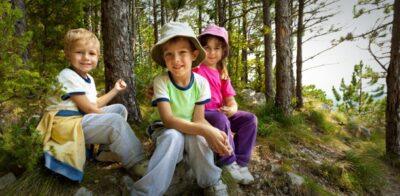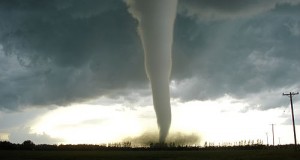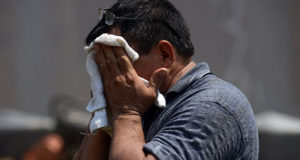Natural disasters, unstable governments and economies, plagues and other dangers seem to be on the rise. The chances of going through life without facing an emergency on some level are becoming less and less.
We pray and we prepare. As we prepare, it’s important not to overlook our children. They need to be an integral part of our survival planning. Part of that plan is preparing their own survival bag or kit. Children will need many of the same things adults need, like water and clothing, but they also have some unique needs. Knowing and preparing for these can go a long way toward smoothing out any emergency situation.
Along with helping our children prepare survival backpacks or bug-out bags, we also should be teaching them basic survival skills. We can’t guarantee that we’ll always be there, but we can help our children gain the skills they will need to deploy in emergency situations.
The Basic Survival Bag
You will want to choose a bag that is child-size appropriate. Some child-sized backpacks even offer built-in hydration systems. Plan to have your children pack their bags as much as they are able. Obviously, preschool children will need a good deal more help than a teenager. Include extra clothing and update your bags whenever you update your child’s regular clothing drawers. Also include three pairs of socks and three pairs of underwear. Gloves, hats, sweaters or jackets and an extra pair of shoes are other important clothing items.
Hygienic items should include a bar of soap in a plastic bag (best option) or hand-sanitizer. If your children use deodorant, include that along with a toothbrush and toothpaste and wet wipes (both for washing and as a toilet paper substitute).
The Secret To Starting Fires In Even The Most Extreme Conditions
It is important to include contact information in case you and your child get separated. The best way to do this is to laminate a three-by-five card that has a picture of your family along with contact numbers and addresses on it. Teach your children how to find a safe person to ask for help. For older children, an area map can be a good item as well.
Food and water are especially important items to include. A refillable water bottle is great, and a necessity if your child’s bag doesn’t have a built-in hydration system. Pack a water filtration system and teach each child how to use it properly. Non-spoiling food, like nuts, sealed bags of dried fruit, granola bars and hard candy should be added. Also, consider any medications your child has and include and update them regularly if possible.
Often in emergency situations, electricity isn’t available. Glow sticks, headlamps and flashlights (with extra batteries) are important to include in your child’s bag. Other emergency gear includes a whistle, a pocket knife (ensure your child knows how to safely use it), an emergency blanket, string, a small first-aid kit, an N95 facemask properly sized for your child, a bag of dryer lint and a fire starter set (steel and flint). As long as your child is responsible enough, teach them how to start a fire on their own and how to safely oversee that fire. One day this skill may save their life.
Even in emergency situations, children will be children, and having small toys for them to distract themselves with can be a God-send while adults determine what needs to be done. Include paper and pens, cards and dice, and other small games. For especially young ones, consider including a coloring book and crayons, a favorite blanket and a stuffed animal.
Of course, there may be other items to add to the above depending on your location, but these should get you and your child started.
There are a few extra things to consider packing depending on your child’s age.
Pregnant Mothers, Newborns and Babies
While babies will have most of their needs met directly by you, it is important to include extra formula (if they are not nursing or if you are worried about your milk supply). Along these lines, you also want to include extra food and water for yourself if you are nursing or pregnant. Most diaper bags contain almost everything you will need for your baby, but you may want to consider including cloth diapers if you don’t already use them. In an emergency situation, it’s highly unlikely that purchasing extra disposables will be an option. Cloth diapers can also be washed. Extra blankets and a comfortable sling or carrier are also incredibly useful. If your child uses pacifiers, throw in a good number of extras — more than you normally would carry in a diaper bag. Pack these baby items in a bag that is easy and comfortable for you to carry.
Ultra-Efficient Water Filter Fits In Your Pocket!
Preschoolers
Preschoolers can carry their own lightweight bags and can start to be involved in packing them. Many times it’s not too early to begin teaching responsibility and independence. Be sure to spend some extra time going over their contact information card, so they not only know the information, but also how to safely approach someone and ask for help. Sadly, in emergency situations, there will be those who seek to take advantage of children, and preschoolers especially are vulnerable. These children will also benefit from “comfort” items included in their bags, items like a stuffed animal or blanket.
Adolescents
Older children should be part of the family emergency planning. They should pack their own bags (with you supervising, of course) and be trained in basic survival skills, like how to filter water properly, start a fire, and apply basic first-aid. High school students can carry adult-sized packs and should carry items that will benefit the family, like extra food or water, or a larger first-aid kit.
While none of us wants to think of a natural disaster or other emergency situation affecting our children, our best defense is to be prepared. Teaching our children necessary survival skills and including them in our plans can go a long way toward helping emergency situations go smoother and ensure the safety and survival of all family members. While no plan is fool-proof, the more skills each family member has, the greater the family’s resiliency in emergency situations will be.
What would you add to these lists? Share your suggestions in the section below:
Awaken Your Child’s Love Of History And Teach Them True Stories Of Freedom
 Off The Grid News Better Ideas For Off The Grid Living
Off The Grid News Better Ideas For Off The Grid Living






